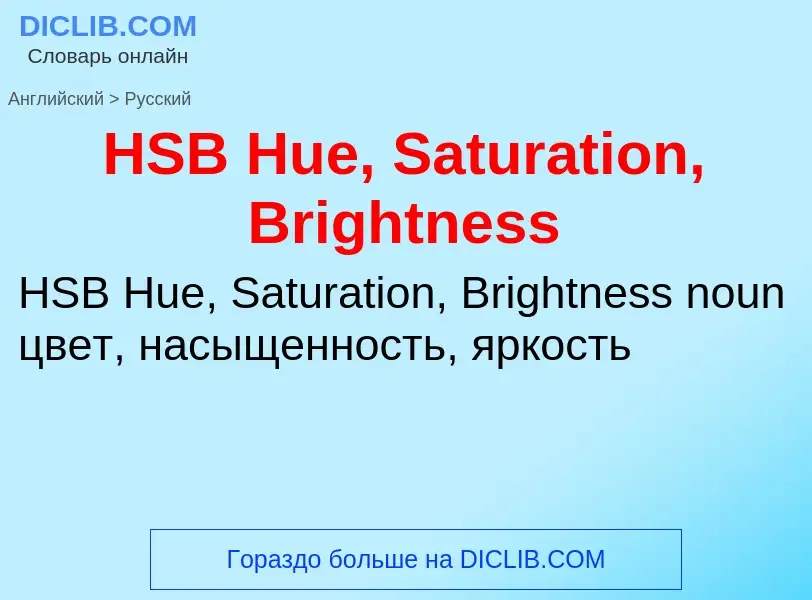Перевод и анализ слов искусственным интеллектом ChatGPT
На этой странице Вы можете получить подробный анализ слова или словосочетания, произведенный с помощью лучшей на сегодняшний день технологии искусственного интеллекта:
- как употребляется слово
- частота употребления
- используется оно чаще в устной или письменной речи
- варианты перевода слова
- примеры употребления (несколько фраз с переводом)
- этимология
HSB Hue, Saturation, Brightness - перевод на Английский
общая лексика
Hue-Saturation-Brightness
тон-насыщенность-яркость
цветовая система, модель HSB
один из методов цветопередачи
сокращение
[high strength bauxite] высокопрочный боксит
Смотрите также
существительное
общая лексика
цвет, насыщенность, яркость
синоним
общая лексика
намагниченость насыщения
Определение
Википедия
HSL (for hue, saturation, lightness) and HSV (for hue, saturation, value; also known as HSB, for hue, saturation, brightness) are alternative representations of the RGB color model, designed in the 1970s by computer graphics researchers to more closely align with the way human vision perceives color-making attributes. In these models, colors of each hue are arranged in a radial slice, around a central axis of neutral colors which ranges from black at the bottom to white at the top.
The HSL representation models the way different paints mix together to create color in the real world, with the lightness dimension resembling the varying amounts of black or white paint in the mixture (e.g. to create "light red", a red pigment can be mixed with white paint; this white paint corresponds to a high "lightness" value in the HSL representation). Fully saturated colors are placed around a circle at a lightness value of ½, with a lightness value of 0 or 1 corresponding to fully black or white, respectively.
Meanwhile, the HSV representation models how colors appear under light. The difference between HSL and HSV is that a color with maximum lightness in HSL is pure white, but a color with maximum value/brightness in HSV is analogous to shining a white light on a colored object (e.g. shining a bright white light on a red object causes the object to still appear red, just brighter and more intense, while shining a dim light on a red object causes the object to appear darker and less bright).
The issue with both HSV and HSL is that these approaches do not effectively separate color into their three value components according to human perception of color. This can be seen when the saturation settings are altered — it is quite easy to notice the difference in perceptual lightness despite the "V" or "L" setting being fixed.



